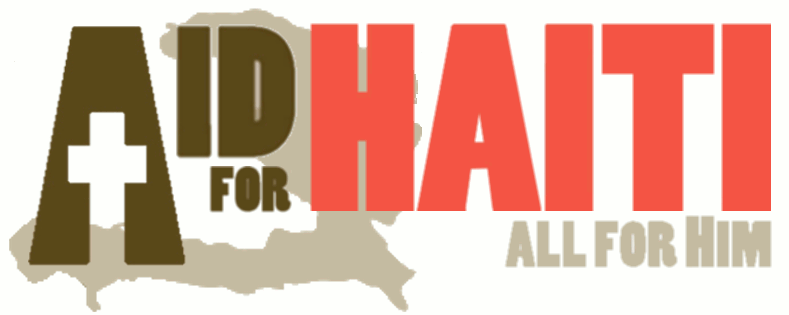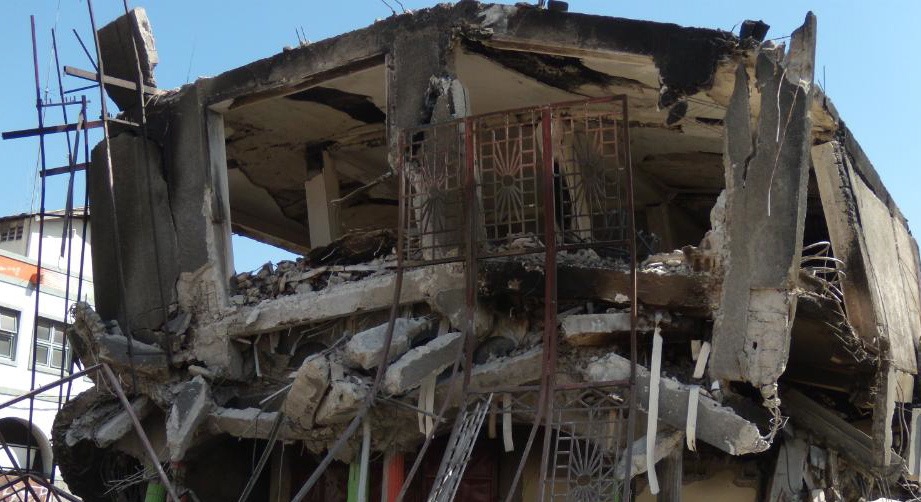CMDA
Tuesday, March 9, 2010
The Haitian nurse in the wound clinic said to me, “Show me where to put the sugar”.
I was helping provide emergency medical care in a coastal town 42 miles southwest of Port-au-Prince. The temporary emergency “hospital” was located on the Wesleyan Church Compound in Petit Goave. Since the earthquake, the town’s population had swelled to over 100,000 from its usual 15,000. The town’s small hospital had not been functioning since the earthquake in January and this temporary “emergency facility”, a conglomeration of tarps and tents, was serving hundreds every day.
The wound clinic was under a white tarp large enough to shade several benches where people waited. Three sheets of plywood on crude legs became the treatment areas. The word seemed to spread quickly that wound care was available and people just kept coming. It had been more than a month since the earthquake, but many wounds had had little to no proper attention.
Each wound represented someone who was wounded much deeper that the wound itself and I was impressed as I watched the Haitian nurses lovingly care for each one. Bacteria were having their way in many of the wounds which caused infection and destruction of tissues. Betadine was the most used agent to clean and dress wounds – some improving while many were not. My mind went to Kenya when in the late 90’s we began revisiting the use of sugar and honey for deeply infected wounds. We found it to be very effective in stimulating healing in chronic septic wounds. Several articles were appearing in medical journals around the time, including journals of wound care, encouraging the use of honey or sugar if honey was not available. This was not new; it had been used for over 4000 years – with great success. But, in favor of more expensive and “up-to-date” methods, its use had greatly diminished.
Now, here I was in Haiti; a land where sugar production and growing of sugar care by peasant farmers has been part of a troubled nation. In my hand was a cup of strong Haitian coffee to which I had added 2 tablespoons of sugar. But, I did not see any sugar on the wound dressing table. There was only betadine and that was not in great supply. One of the problems with betadine is that it causes necrosis of good tissue as well as infected tissues. The necrosis of good tissue promotes ongoing infection and poor or delayed wound healing along with increased pain in comparison to honey or sugar. I asked one of the nurses if they ever used honey or sugar in the wounds. The incredulous stares answered my question. In fact they seemed to say, “You must be crazy. Don’t try to make us use something that you would not use yourself. We may be a poor country but we deserve to have care like you expect. We do not appreciate you trying to do this to us!”
I thought of all the ways the Haitian people have been taken advantage of over the last centuries. Foreign countries have plundered the once rich forests of hardwoods leaving eroded, rocky, unproductive fields and mountains. Multinational companies have paid pathetic wages to produce toys and souvenirs that bring a premium in the western world. Leadership has been unjust and has pocketed millions meant to aid those in need.
“Now, here was another rich American standing on Haitian soil for only a few days. And, he is asking if “we ever put sugar on our wounds!”?”
There were still over 200 patients waiting in line so I did not want to take extra time to extol the virtues of sugar and that it would be better. Though the nurses didn’t actually question me, I knew if they used sugar only because I wanted them to while I was watching, they were not going to do it later when I was out of the picture.
So, I knew I had to take the time to teach, to explain about the osmotic forces that keep cells from exploding or shrinking. This is the presumed mechanism of honey/sugar. It kills bacteria by osmotic forces, speeding wound healing, decreases the amount of dead tissue needing debridement, decreases pain at the time of dressing changes, and results in fewer resistant infections.
But, I sensed something more as well. Much too often in missions we from North America just want to take charge. We want to make the decisions, we want to dictate what should and will happen. Is there any wonder why the world often sees us as arrogant and conceited, even in missions? Couldn’t I just say to use sugar on these wounds? It would save a lot of time. And, after all, this is a country used to slavery and dictatorships! In my heart though I knew I could not just dictate or give a command. For far too long, decisions have been wrenched from the people. In fact, they have been told over and over again, to the point they now believe, that they are incapable of making these decisions. Yes, I could dictate this wound needed sugar and someone would apply it. But, would anyone really put their heart into it? Would sugar be used on the next patient or ever again? Would anything really change?
I had to give up the idea that I was in charge or that the decision was mine. I could only coach. I went ahead and took a few minutes to teach and to explain. I shared examples of how honey or sugar had helped in Kenya. And, I stressed how its use was on the increase in the USA and other countries. Then I encouraged the nurse to chose a few patients with dirty wounds and try the sugar.
On the table was a young boy with an infected foot – and I wanted so badly to put sugar on his wound. But, I knew it would do no good if I was the one who did. The nurses live in Haiti while I do not. They would be the ones caring for all the wounds while I would leave in a few days. It is their country, their responsibility, and their decision. I wanted to apply the sugar, but knew I should not. When I suggested, “…use it if you want and see what happens. If you are happy after several days you can decide for yourself if you want to continue. But, I will be gone and it is up to you.”, there was animated discussion that followed.
Soon someone appeared with a coffee-cup like the one in my hand. It held Haitian sugar. One of the nurses said, “Show me where to put the sugar.”!
Over the next few days, as we developed a trusting relationship, an increased number of questions came from the wound clinic. “Would you look at this wound? Could you prescribe some antibiotic and some pain medicine for this patient? Would you please drain this abscess?”
I kept looking for the sugar. Would it appear? Would it be used? I wish I could report to you that I saw hundreds of wounds now being treated with sugar. I wish I could say … No, I cannot.
But, there is sugar in Haiti. I know…I drank of it in my morning coffee. I watched as it was applied to one wound. My impatience told me to apply sugar myself everywhere, anywhere it was needed. I waited…
The Good News must be like this. Missions must be like this. What we want to give, and even impose on others, will do no good unless the heart makes the decision as one’s own. It has taken me 53 years to learn something about this and yet I still want to just have people do it my way or believe as I do.
Great good can come out of Haiti. The people are beautiful. They are fully capable of managing their lives, making decisions, bringing about change that can lead to restored relationships, productive land and a brighter future. Will we give them permission to do so? Will we communicate that we believe in them and support their decisions? Will we allow them to discover the joy of the Kingdom of God that He wants for the Haitian people?
Change takes patience over time.
I left Petit Goave last week. The last evening, as I was helping clean up from the day’s work, I noticed something. Sitting on a table – a table under the white tarp in the wound clinic, a clinic under a large mango tree – was a small coffee cup. It was not mine. The spoon in it was not mine. The sugar inside the cup was not mine. But, there it was.
There is sugar in Haiti.
“Show me where to put the sugar!”



Published by